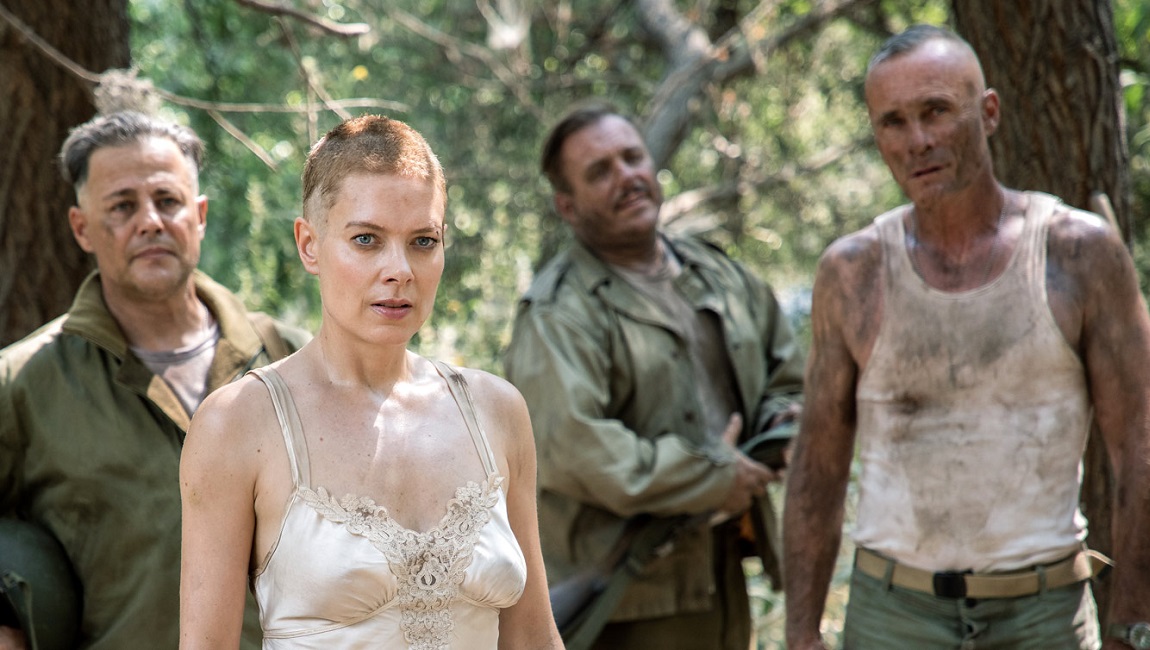Icelandic director Guðmundur Arnar Guðmundsson’s Beautiful Beings is a brutal yet abundantly tender coming-of-age tale that examines how intergenerational trauma mars the friendships that teenagers have with each other. As a film that focuses on the dysfunctional bonds between four boys — most of whom come from abusive families — Beautiful Beings bears a striking resemblance to Darko Stante’s ravishing 2018 feature debut, Consequences, in which scenes of juvenile violence condemn a decaying society which orphans helpless children.
What elevates Beautiful Beings to a bildungsroman worthy of its nomination as Iceland’s Academy Award submission are the magical and hallucinatory sequences that recur throughout the film. For children whose first experiences of love are intertwined with domestic violence, it can be impossible to name the hurt. The emotional vulnerability of children is partly why most domestic abuse cases go overlooked; abusive parents are aware that speaking out is not an option for children. In Beautiful Beings, Guðmundsson uses fantastical elements to ensure that the experiences of children are understood by adult viewers; this element of surrealism is how the film’s portrayal of social cruelty cleverly resists veering into senseless suffering.
Beautiful Beings begins by closely following 14-year-old Balli (Áskell Einar Pálmason) as he is bullied by the other boys in his school, who go so far as to stalk him in order to bash his face in with a burnt tree branch. Balli’s mutilated face, covered by an unflattering mask, becomes the topic of the Iocal news report on youth violence (which also conveniently serves as exposition of the film’s thematic concerns). Elsewhere, Balli’s classmate, Addi (Birgir Dagur Bjarkason), is watching the news report with his mother (Aníta Briem). When Addi’s mother expresses concern for Balli, Addi disses him for being an oddball who deserves his fate. But Bjarkason’s sensitive performance betrays Addi’s hardened mask — he clearly feels for Balli, even if he is unwilling to admit that at the expense of his youthful machismo.
But Addi’s empathy perks when he offers Balli a cigarette and pleads with his gang of friends, Konni (Viktor Benóný Benediktsson) and Siggi (Snorri Rafn Frímannsson), to accept Balli into their group. The pair are reluctant at first, but gradually warm up to Balli when they notice that he lives alone in abject squalor and filth; his drug-addicted father is dead, his step-father is in jail, and his mother is rarely home. Their camaraderie, however, isn’t instant, and this is where Guðmundsson’s screenplay expresses clear nuance in its depiction of the tumultuous relationships between traumatized teenagers who haven’t been taught how to love. Konni and Siggi make fun of Balli and his house and at one point even spit on him for being afraid of heights. Of course, as we later realize from Addi’s voiceovers, the boys’ attitude toward Balli stems from and attempts to conceal the truth that their own families are just as broken: Konni spends his time beating up other kids to avoid going home to an abusive father, while Siggi’s father is a negligent alcoholic. In the boys’ movement toward brotherhood, what could be mere miserabilism becomes richer.
Of the four boys, Addi’s home situation is the most stable and hopeful, but he’s embarrassed by his loving mother, who proclaims to have visions of the future — something that Addi experiences himself but vehemently denies. This injection of mysticism may seem jarring in an otherwise staunchly realist script, but it adds character to the film’s study of the ambiguous ways that children interpret trauma, both theirs and others’. Cinematographer Sturla Brandth Grøvlen (The Innocents, Another Round) imbues Addi’s dream sequences with both horror and notable empathy: violent fathers appear as supernatural apparitions, but these dark visions are also balanced by tender scenes, such as one where Addi gently asks Balli whether his father has been sexually abusing his sister. The sun’s warm hues appear to protect Addi and Balli as they struggle to articulate the suffering their own families inflict. Such piercing expressions of love between the boys often take place by the expansive sea or in sunlight; in doing so, Beautiful Beings posits that learning to love and be loved in return is a precarious but precious freedom.
When Guðmundsson’s film reaches a terrifyingly brutal conclusion, the sacrificial depths of compassion the boys have for each other assuage the cruelty they have dealt with. Intergenerational violence doesn’t have to last. In a world where boys are so often forced to be men, Beautiful Beings reminds us that children are always also simply children; the kindness they have runs deep, and we can only hope that it endures into adulthood.
Published as part of InRO Weekly — Volume 1, Issue 2







